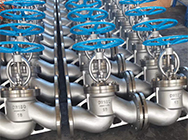An Overview of Different Types of Check Valves and Their Applications in Various Industries
Understanding Check Valve Types A Comprehensive Overview
Check valves are essential components in fluid control systems, designed to allow fluid to flow in one direction while preventing backflow. This function is critical in various applications, including water supply, oil and gas, and chemical processing. Among the numerous types of check valves, each serves unique purposes and offers distinct advantages. Understanding these types is vital for engineers and system designers to select the most suitable valve for a given application.
1. Swing Check Valves
Swing check valves are one of the most common types. They operate using a disc that swings away from the seat to allow forward flow. This design allows for minimal pressure drop when the valve is in the open position. Generally, swing check valves are suitable for horizontal piping systems and can handle large flow rates. However, they may be less effective in vertical applications, as the weight of the disc can hinder its operation.
2. Lift Check Valves
Lift check valves feature a disc that moves vertically. When fluid flows in the forward direction, the disc rises off the seat, allowing flow to pass through. Conversely, when the flow reverses, the disc falls back onto the seat, preventing backflow. Lift check valves are often used in high-pressure and high-temperature applications due to their robust design. They can be installed in either horizontal or vertical piping systems but may experience a higher pressure drop compared to swing check valves.
3. Ball Check Valves
Ball check valves utilize a ball that sits in the path of the flow. When fluid flows in the correct direction, the ball is pushed away from the seat, allowing the fluid to pass. If there is a reverse flow, the ball is forced back onto the seat, creating a seal to prevent backflow. These valves are compact and simple, making them suitable for various applications, particularly where space is limited. However, they may not function as effectively at low flow rates.
check valve types

Diaphragm check valves use a flexible diaphragm that moves in response to pressure changes. In forward flow, the diaphragm is pushed down, allowing fluid to pass. When reverse flow occurs, the diaphragm seals against the seat, preventing backflow. These valves are ideal for applications involving corrosive fluids or solids, as they provide a gentle sealing mechanism and can handle particulate matter without clogging.
5. Dual Plate Check Valves
Dual plate check valves, also known as tilting disc check valves, feature two plates that pivot to open and close. This design allows for a rapid response to changes in flow, reducing the risk of water hammer—a pressure surge that can cause damage to pipelines. Dual plate check valves are lightweight and compact, making them suitable for various applications, including wastewater treatment and HVAC systems.
6. Spring Loaded Check Valves
Spring loaded check valves utilize a spring mechanism to assist in closing the valve. When forward flow occurs, the spring compresses, allowing the valve to open. However, when reverse flow occurs, the spring forces the valve shut. This type of check valve offers a reliable sealing mechanism and can be used in applications requiring precise control of backflow.
Conclusion
Selecting the right type of check valve is crucial for ensuring the safety and efficiency of a fluid control system. Each type of check valve has its unique advantages and applications, from swing check valves that handle large flow rates to diaphragm check valves that excel in harsh environments. Understanding these check valve types enables engineers and designers to make informed decisions that enhance system performance and longevity. Whether for industrial, commercial, or residential use, the right check valve is a key component in fluid management.
-
The Key to Fluid Control: Exploring the Advantages of Ball Valves in Industrial SystemsNewsJul.09,2025
-
The Versatile World of 1, 2, and 3 Piece Ball ValvesNewsJul.09,2025
-
Stainless Steel Ball Valves: The Ideal Choice for Efficient Flow ControlNewsJul.09,2025
-
Optimizing Fluid Control with Ball Float ValvesNewsJul.09,2025
-
Manual Gate Valves: Essential for Control and EfficiencyNewsJul.09,2025
-
Everything You Need to Know About Butterfly ValvesNewsJul.09,2025
-
The Versatility of Wafer Type Butterfly ValvesNewsJul.08,2025




